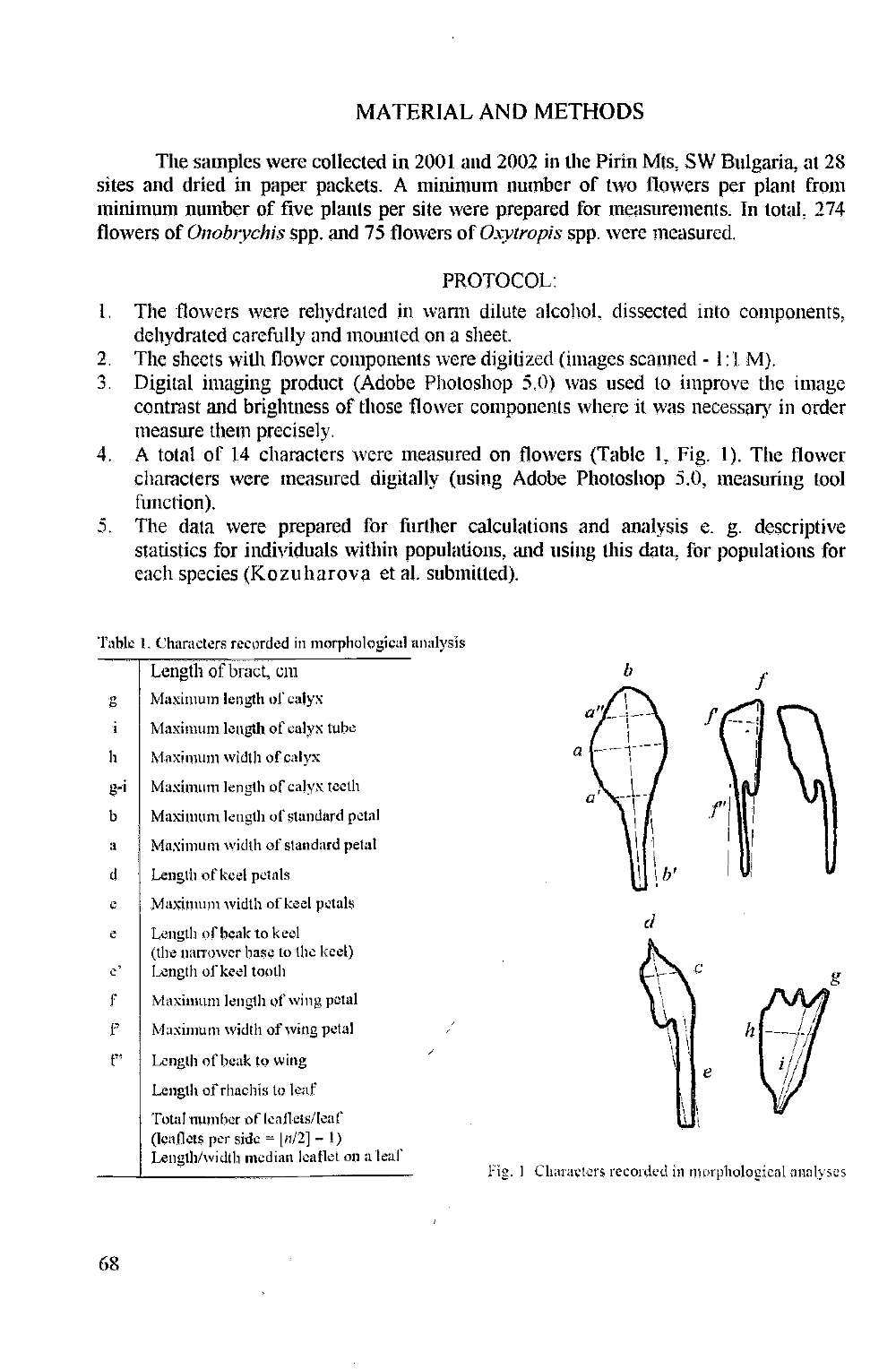

MATERIAL AND METHODS
The samples were collected in 2001 and 2002 in the Pirin Mts, SW Bulgaria, at 28
sites and dried in paper packets. A minimum number of two flowers per plant from
minimum number of five plants per site were prepared for measurements, in total, 274
flowers of
Onobrychis
spp. and 75 flowers o f
Oxviropis
spp. were measured.
PROTOCOL:
1. The flowers were rehydratcd in warm dilute alcohol, dissected into components,
dehydrated carefully and mounted on a sheet.
2. The sheets with flower components were digitized (images scanned - 1:1 M).
3. Digital imaging product (Adobe Photoshop 5,0) was used to improve the image
contrast and brightness of those flower components where it was necessary in order
measure them precisely.
4. A total of 14 characters wore measured on flowers (Table L Fig. 1). The flower
characters were measured digitally (using Adobe Photoshop 5.0, measuring tool
function).
5. The data were prepared for further calculations and analysis e. g. descriptive
statistics for individuals within populations, and using this data, for populations for
each species (Kozuharova et al. submitted).
Table i. Characters recorded in morphological analysis
Length of bract, cm
g
Maximum length of calyx
i
Maximum length of calyx tube
h
Maximum width of calyx
g-i
Maximum length
of
calyx teeth
b
Maximum length of standard petal
a j Maximum width of standard petal
d
Length of keel petals
c
Maximum width of keel petals
e
Length of beak to keel
(the narrower base to the keel)
e’
Length of keel tooth
f
Maximum length of wing petal
f
Maximum width of wing petal
f * 1
Length of beak to wing
Length of rhachis to leaf
Total number ofleaflets/feaf
(leaflets per side = pt/2] - !)
Lenglh/width median leaflet on a leal
e
fig. 1 Characters recorded in morphological analyses
68
Электронная Научная СельскоХозяйственная Библиотека









